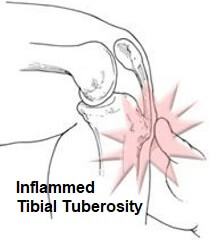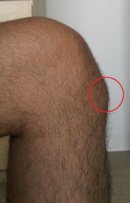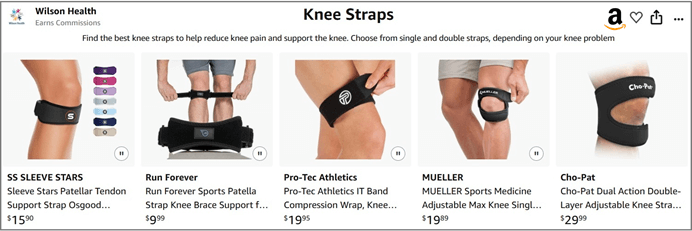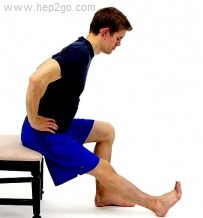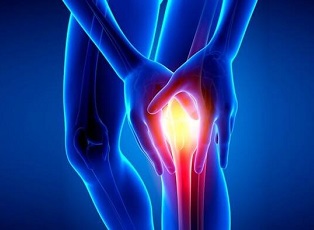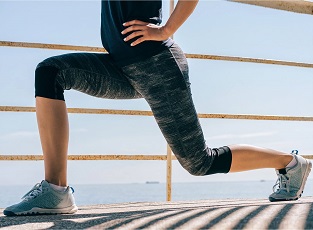- Home
- Common Knee Conditions
- Osgood Schlatters
Osgood Schlatter Disease
Written By: Chloe Wilson, BSc(Hons) Physiotherapy
Reviewed by: KPE Medical Review Board
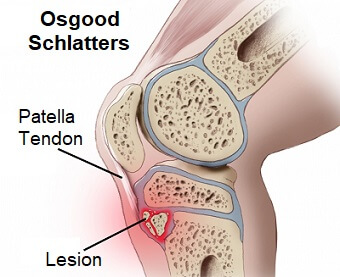
Osgood Schlatter Disease (OSD) is the most common cause of knee pain in adolescents.
It is caused by tension and inflammation just below the kneecap where the patella tendon attaches which can result in a painful bony lump.
Osgood Schlatters usually occurs in active people, most commonly aged 9-16, often following a growth spurt and affects approximately one in five adolescents.
It is most common in boys, particularly those playing lots of sport involving running, kicking and jumping. Recovery can take anything from a few weeks to a few months and rest from aggravating activities is vital.
Here, we will look at what causes Osgood Schlatter Disease, the classic symptoms, treatment options and the recovery process, as well as prevention strategies to stop Osgood Schlatters developing or returning.
What Causes Osgood Schlatter Disease
The most common cause of Osgood Schlatter Disease is a sudden growth spurt, making it a common cause of knee pain in adolescents.
The quadriceps muscles (quads) attach to the front of the shin bone just below the knee via the patella tendon. Osgood Schlatter disease usually develops after a sudden growth spurt when the leg bones (femur and tibia) grow quicker than the quads. As a result, the muscles get very tight.
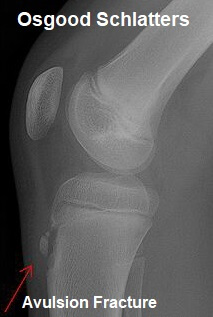
This muscle tightness creates a lot of tension where the patella tendon attaches to the shin bone at the tibial tuberosity. This tension pulls on the underlying bone, damaging it, known as Traction Apophysitis, which results in inflammation and swelling, Osgood Schlatter Disease.
The body tries to heal itself by laying down new layers of bone, but if you are doing lots of activities like running and kicking, this healing mechanism goes into overdrive causing a bony lump to form on the shin.
Sometimes, the tension in the muscles pulls so hard on the bone that small cracks develop, pulling the tibial tuberosity away from the tibia itself. This is known as an avulsion fracture.
Occasionally, the Osgood Schlatters develops following a direct blow to the tibial tuberosity, such as a forceful kick, but this is much less common.
Typical Symptoms
The main symptoms of Osgood Schlatter Disease are:
- Pain: just below the kneecap that gets worse with sporting activities such as kicking and jumping. The pain comes and goes increasing with activity and decreasing with rest, rather than being constant
- Tenderness: when any pressure is applied to the area
- Bony Lump: around 2cm below the kneecap at the tibial tuberosity where the body has laid down extra bone to try and prevent further damage. This can vary in size depending on how advanced the condition is
Usually OSD tends to only affect one knee, though in 20-30% of cases people get symptoms in both knees. Osgood schlatters disease is one of the most common causes of a hard lump below the knee.
Diagnosing Osgood Schlatters
When diagnosing Osgood Schlatter Disease, your doctor will start by asking you about your symptoms, your lifestyle, what sports you do and how often. With children and adolescents, they will also ask about recent growth spurts.
They will then examine the knee, looking for signs of tenderness, swelling, redness and the tell tale bony lump.
You may be sent for x-rays to look more closely at the bone affected, particularly if they suspect an avulsion fracture at the tibial tuberosity, but this is not always necessary.
Treating Osgood Schlatters
The best place to start when treating Osgood Schlatter Disease is to rest completely from any activities that aggravate your symptoms. This will typically be sports that involve lots of jumping or kicking. Failure to do so will only make things worse as more damage is done to the tibial tuberosity.
Treatment for Osgood Schlatters usually involves:
#CommissionsEarned from Amazon on qualifying purchases
1. PRICE
PRICE is the first line of treatment with Osgood Schlatters and stands for Protect, Rest, Ice, Compress, Elevate. You should rest from any aggravating activities until your symptoms have settled and once you return to sport, icing the knee before and after can really help.
It is important to use ice effectively else it can make things worse - in the
Ice treatment section you can find out how to use ice safely and effectively and the best ways to apply ice.
2. Knee Straps
Knee straps are an absolute must with Osgood Schlatter Disease! Wearing a knee strap directly on the patellar tendon (below the kneecap but above the tibial tuberosity) works really well to reduce pain and facilitate returning to sport as it directs the tension away from the bone.
They are simple to use, extremely effective and only cost around $6/£9.
In the knee strap section you can find out more about how they work and which ones are best for Osgood Schlatters, or visit our Amazon US Storefront.
3. Painkillers
Paracetamol/Acetaminophen may be recommended to help to reduce the pain associated with OSD. NSAIDS (non-steroidal anti-inflammatories) such as ibuprofen/Advil can help to reduce pain and inflammation but are not always recommended for children. Always check with your doctor before taking any medicines.
4. Exercises
Exercises are a vital part of the rehab process with Osgood Schlatters. After an initial period of rest to let things settle down, you can start some gentle exercises.
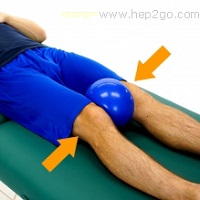
The best place to start is with stretching exercises to help to reduce the tightness in the quadriceps and resultant tension on the tibial tuberosity. The sooner the muscle length catches up with the bone growth, the quicker OSD will settle. Find Out More >
Once the quads are starting to lengthen, you can add in strengthening exercises to regain the strength around the knee that will have been lost due to the pain and reduced activity levels. These must be progressed slowly so as not to cause a flare up. Find Out More >
5. Gel Knee Pads
Gel knee pads are a great way reduce the forces going through the knee when kneeling and eliminate friction on the bone with OSD. Anyone who spends any time kneeling e.g. gardening, housework, DIY etc should invest in these.
Visit the gel knee pads section to compare brands and read user reviews to find the best ones for you.
6. Plaster Cast
Very occasionally, when the symptoms are severe, your doctor may recommend immobilising the knee in a plaster cast to ensure complete
rest for 3 weeks. If this is the case, you will need to use crutches to move around. Check out our top tips on getting up and down stairs with crutches!
The Recovery Process
It generally takes somewhere between a few weeks and a few months for Osgood Schlatter Disease to settle down completely. Usually, the knee needs total rest from any aggravating activity for about a week. Then training can recommence but with reduced frequency, duration and intensity, to ensure that symptoms don't return. If they do, activity levels should be reduced again.
People usually return to normal sporting activities after about a month, but often benefit from wearing a knee strap to reduce the risk of symptoms flaring up again. However, sometimes it can take a long time to fully recover, up to 2 years.
Things usually settle down when the bone reaches maturity at around 16 years of age with approximately 9 out of 10 cases of Osgood Schlatters resolving completely. Occasionally however, people continue to get problems as adults.
Preventing Osgood Schlatters
Osgood Schlatter Disease can be difficult to resolve and therefore it is definitely worth trying to prevent it. There are both things you should do and things that you should avoid!
Things to Do
- Stretching Exercises:
OSD is caused by muscle
length not keeping up with bone growth during growth spurts. Stretching
the thigh muscles will combat this and reduce the tension on the tibial
tuberosity. Visit the link to find out the quickest, most effective ways
to stretch the knee muscles.
- Strengthening Exercises: ensuring there is no muscle weakness around the knee can help to reduce the chance of developing Osgood Schlatters. Visit the link for simple exercises that will help.
Things to Avoid
- Resistance Training: i.e. leg weights under the age of 16 – it puts too much strain on soft, young bone
- Over-Training: avoid long training sessions (more than a couple of hours) or training too often (try to have a day off in between training sessions)
- Repetitive Activities: e.g. hopping and jumping
What Next?
Visit the Osgood Schlatter Exercises section for exercises that will help you recover quickly from the condition.
There are a number of other causes of pain below the knee. If this doesn’t sound quite like your problem, visit the Knee Pain Diagnosis section for help working out what is causing your pain.
You may also be interested in the following articles:
- Swelling Below The Knee
- Knee Pain On Stairs
- Front Knee Pain
- Inner Knee Pain
- Outer Knee Pain
- Knee Pain From Running
- Sharp Knee Pain
- How To Do Stairs With Knee Pain
- What Is Wrong With My Knee?
Related Articles
Last Updated: January 13th, 2026
Next Review Due: January 13th, 2026
